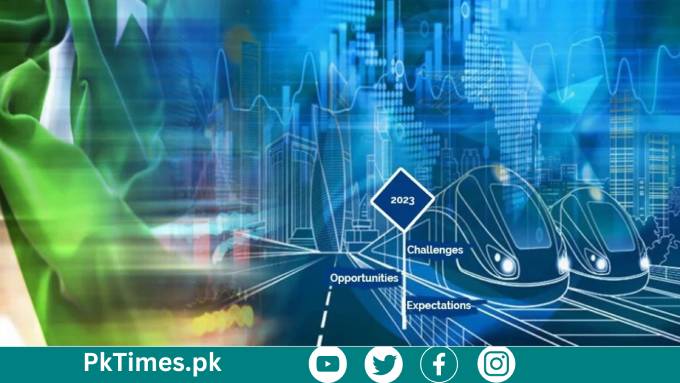Understanding the GDP of Pakistan: In the realm of economics, Gross Domestic Product (GDP) stands as a cornerstone metric, offering insights into the economic health and vitality of a nation. Pakistan, a country of immense potential and diverse economic landscapes, presents a fascinating case study when examining its GDP. In this blog post, we embark on a journey to unravel the intricacies of Pakistan’s exploring its significance, trends, and implications for the nation’s economy.
What is GDP?
At its core, GDP represents the total monetary value of all goods and services produced within a country’s borders over a specific period, typically measured annually or quarterly. Comprising various components such as consumption, investment, government spending, and net exports, GDP serves as a key indicator of a country’s economic performance and standard of living.
Factors Influencing Pakistan’s GDP
Pakistan’s GDP is shaped by a myriad of factors, reflecting the interplay between its agriculture, industry, services sector, investment climate, and government policies. The agricultural sector, a vital contributor to Pakistan’s GDP, faces challenges such as water scarcity, land degradation, and outdated farming practices. Meanwhile, the industrial and services sectors play increasingly significant roles, fueled by investments in infrastructure, technology, and human capital.
Trends in Pakistan’s GDP
A historical overview of Pakistan’s GDP growth reveals a story of resilience, punctuated by periods of growth, stagnation, and recovery. Despite facing numerous challenges, including political instability, natural disasters, and economic shocks, Pakistan has demonstrated a remarkable capacity for adaptation and growth. Comparisons with regional and global GDP trends provide valuable insights into Pakistan’s relative position and prospects for development.
| Trends in Pakistan’s GDP | Details |
|---|---|
| Historical Overview | An examination of Pakistan’s GDP growth over time, highlighting key periods of expansion, stagnation, and contraction. This includes a historical analysis of GDP growth rates, identifying trends and patterns that have shaped Pakistan’s economic trajectory. |
| Annual GDP Growth Rate | Analysis of Pakistan’s annual GDP growth rate, providing insights into the pace and direction of economic growth in recent years. This includes a breakdown of GDP growth by year, identifying periods of robust growth, economic slowdowns, and contractions. |
| Sectoral Contribution | Examination of the contribution of different sectors to Pakistan’s GDP, including agriculture, industry, and services. This involves analyzing the relative weight of each sector in the economy and assessing their respective contributions to overall GDP growth. |
| Regional and Global Comparisons | Comparison of Pakistan’s GDP growth with regional peers and global counterparts, providing context and benchmarking for Pakistan’s economic performance. This involves analyzing GDP growth rates, sectoral contributions, and other economic indicators relative to neighboring countries and global economic trends. |
| Impact of Major Events and Crises | Assessment of the impact of significant events and crises on Pakistan’s GDP, such as natural disasters, political instability, economic reforms, and global economic downturns. This includes an analysis of how these events have influenced GDP growth rates, sectoral dynamics, and overall economic resilience in Pakistan. |
Significance of Pakistan’s GDP
The significance of Pakistan’s GDP extends far beyond mere economic statistics, impacting various aspects of society and governance. It influences poverty and inequality levels, employment opportunities, government revenue, and international relations. A robust GDP growth trajectory can foster inclusive development, improve living standards, and enhance Pakistan’s global standing as a vibrant emerging market.
Challenges and Opportunities
However, Pakistan’s path to sustainable economic growth is not without its challenges. Structural constraints, such as inadequate infrastructure, energy shortages, and governance issues, pose formidable barriers to progress. Addressing these challenges requires concerted efforts to promote inclusive growth, enhance productivity, and attract foreign investment and aid.
Future Outlook
Looking ahead, the future of Pakistan’s GDP hinges on its ability to navigate uncertainties, seize opportunities, and implement effective policies. Projections for GDP growth are subject to various factors, including domestic reforms, global economic trends, and geopolitical developments. By embracing innovation, fostering entrepreneurship, and prioritizing social welfare, Pakistan can chart a course toward a prosperous and resilient future.
Conclusion
In conclusion, the GDP of Pakistan serves as a critical barometer of its economic well-being and developmental progress. By understanding the complexities of Pakistan’s GDP and addressing underlying challenges, policymakers, stakeholders, and citizens can work together to build a more prosperous and inclusive society. As Pakistan continues its journey of growth and transformation, the significance of GDP as a guiding beacon for progress cannot be overstated.
Read more: what happens if pakistan defaults
FAQ’s
- What factors contribute to fluctuations in Pakistan’s GDP growth rate?
- Fluctuations in Pakistan’s GDP growth rate can be influenced by a range of factors, including domestic economic policies, global economic trends, political stability, natural disasters, and external shocks such as changes in oil prices or trade relations. Understanding these factors and their impact on GDP growth is essential for assessing the resilience and sustainability of Pakistan’s economy.
- How does the sectoral composition of Pakistan’s economy affect its GDP growth?
- The sectoral composition of Pakistan’s economy, including agriculture, industry, and services, plays a crucial role in determining its GDP growth trajectory. Changes in the relative contributions of these sectors can affect overall economic performance, with fluctuations in agricultural output, industrial production, and service sector activities impacting GDP growth rates. Analyzing sectoral dynamics provides insights into the drivers of Pakistan’s economic growth.
- How does Pakistan’s GDP growth compare to that of neighboring countries and global peers?
- Comparisons of Pakistan’s GDP growth with neighboring countries and global peers offer valuable insights into its economic performance and competitiveness. Assessing GDP growth rates, sectoral contributions, and other economic indicators relative to regional and global benchmarks helps identify areas of strength and weakness in Pakistan’s economy, informing policy decisions and strategic priorities for sustainable development.


